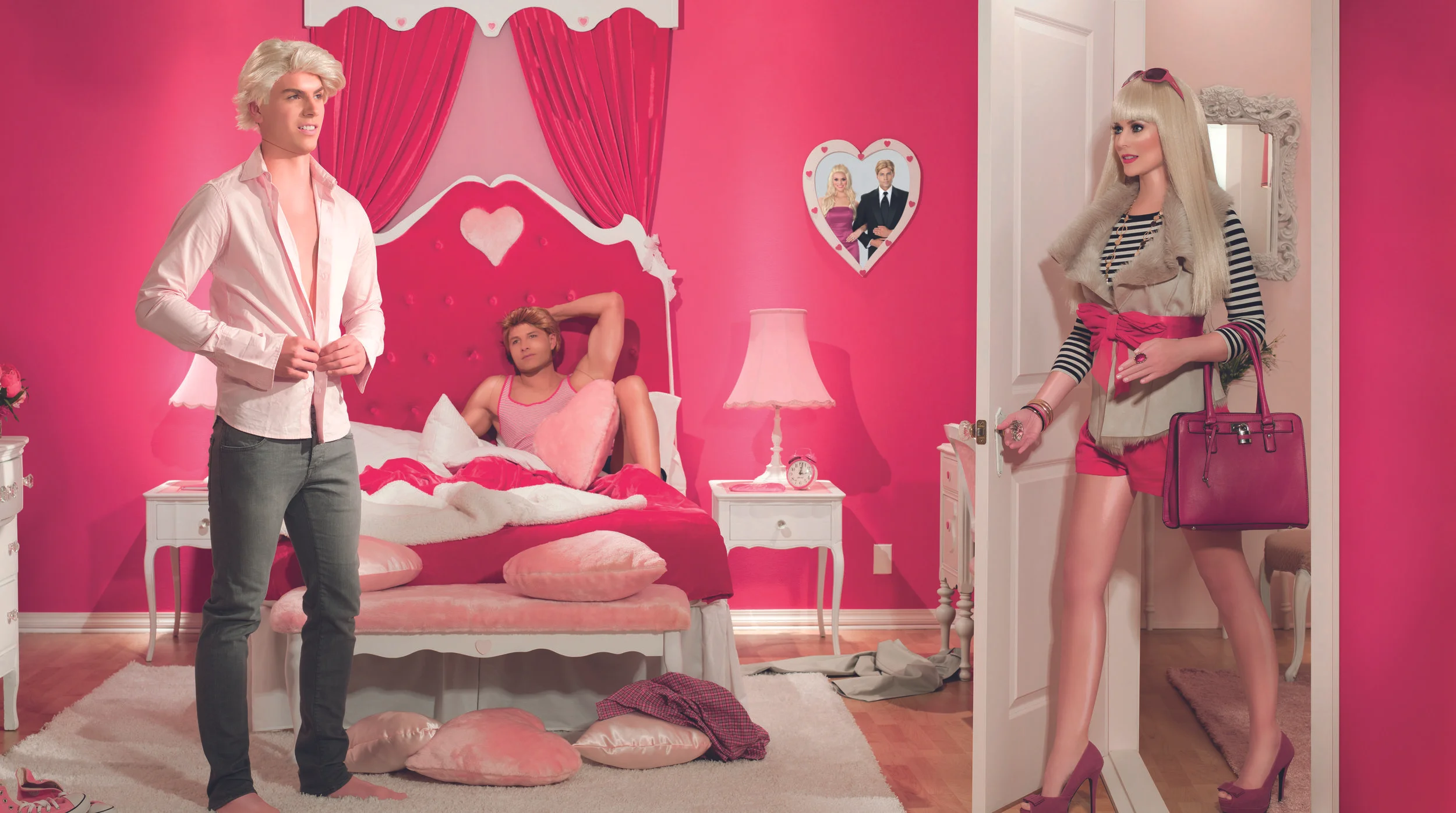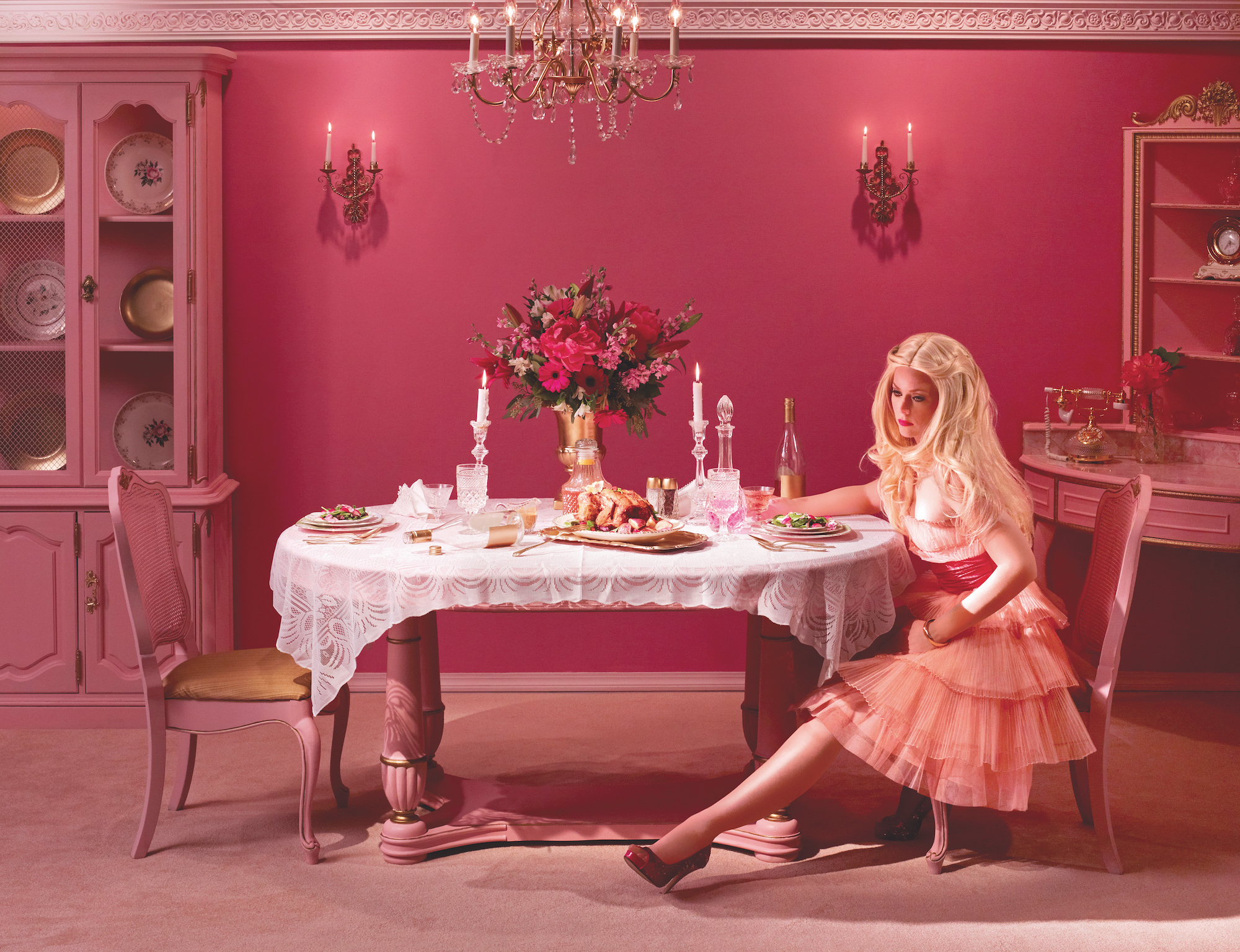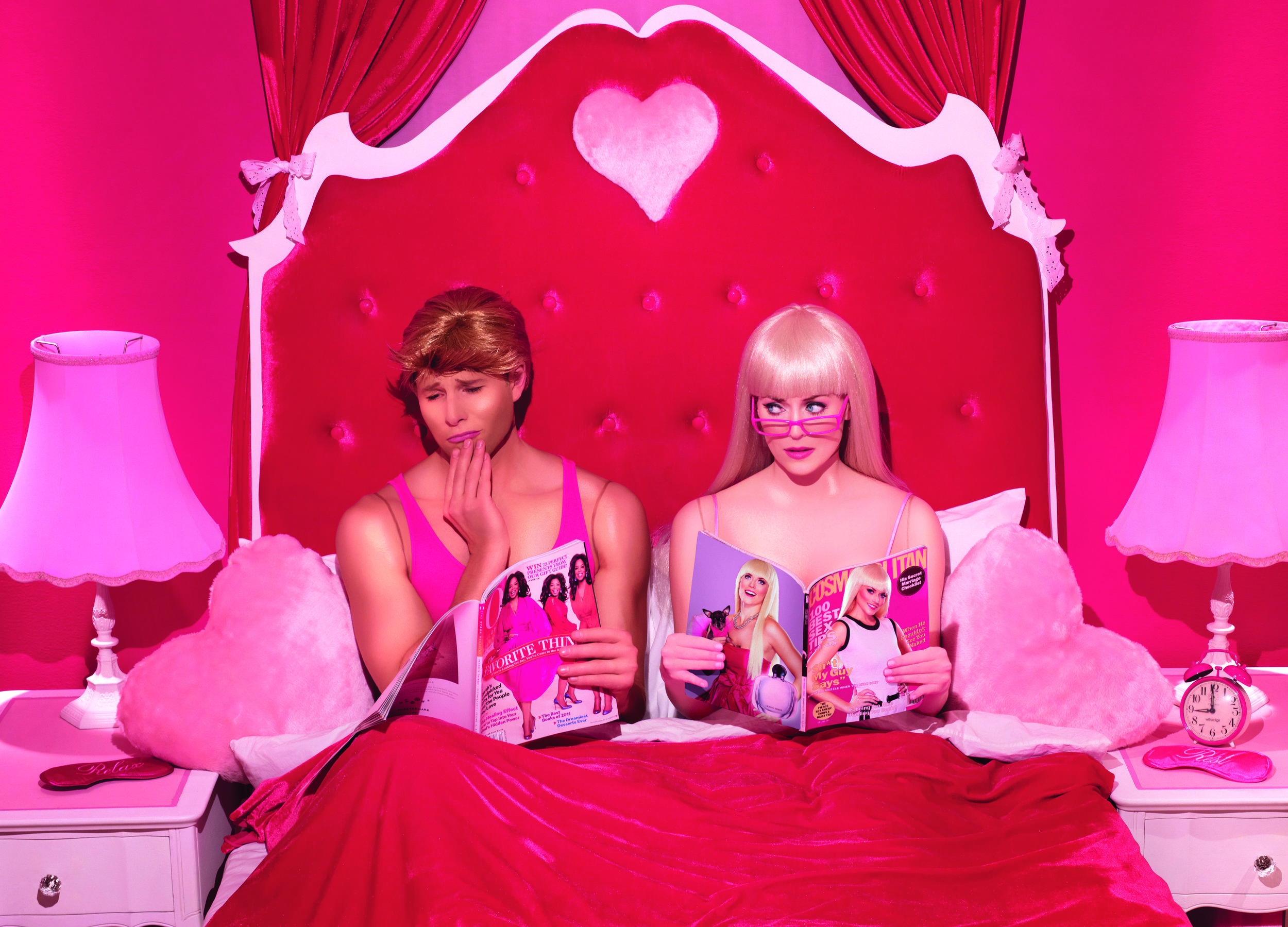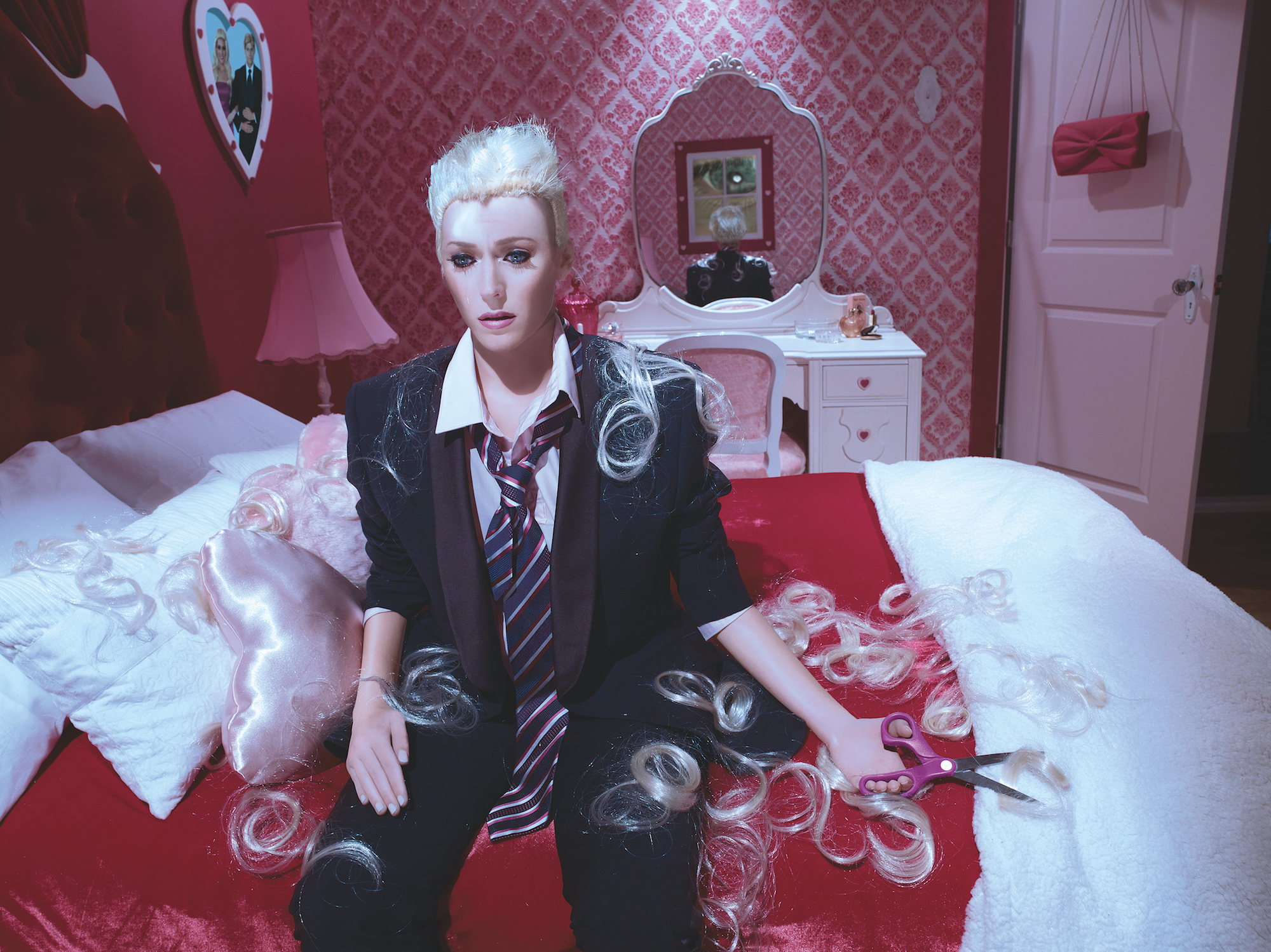DINA GOLDSTEIN - This Ken* Be Us
This Ken* Be Us
WITH HER PERFECT GOLDEN LOCKS, LONG TANNED LIMBS, AND A BOYFRIEND THAT GIVES CHRIS HEMSWORTH A RUN FOR HIS BICEPS, BARBIE MIGHT SEEM LIKE SHE STRUCK GOLD. BUT CANADIAN PHOTOGRAPHER DINA GOLDSTEIN HAS DEFIED THE COMMON NOTION OF PERFECTION AND CHALLENGED THE TRUE MEANING OF “HAPPILY EVER AFTER.” IN HER PHOTOGRAPHIC SERIES IN THE DOLLHOUSE, SHE REENACTS BARBIE’S LIFE WITH KEN IN HUMAN SIZED-PROPORTIONS AND DRAWS A PERFECT IMAGE OF WHAT WE DON’T SEE BEYOND THE PANTONE PINK WALLS, PROVING THAT LIFE IN PLASTIC MAY BE – AFTER ALL – NOT SO FANTASTIC.
“I know people that are wealthy but still have many difficulties in their lives...so money isn’t always a cure. I have friends that are beautiful and also have many challenges...so beauty isn’t always the answer and I have friends that are otherwise healthy and fit but also find themselves dealing with problems. This world is so complex and everyone has his or her own challenges to deal with.”
We all grew up with this one mindset of Barbie: “the bitch has everything.” In The Dollhouse portrays Barbie as a victim, albeit in a comical way. When did you get this reality check and decided to share it with the world?
In The Dollhouse is an extension of my interest in iconic pop characters that make their way into the fertile and developing minds of children and continue to be subconsciously embedded throughout our lifetime. Fallen Princesses creates tableau with Disney Princesses and utilizes narratives from parables that were originally written as cautionary tales. Today these formulas are recycled in Hollywood, as a result modern society has created generations of girls more focused on beauty standards and not prepared for the complexities and challenges of the human experience.
Fallen Princesses challenges the notion of ‘happily ever after’ and In the Dollhouse breaks down the perceptions of “perfection.” We see that perfection is not stable, as the idealistic relationship of the most popular pink plastic dolls comes to a tragic end. The series is a 10 part sequential narrative that unfolds within a custom built human size dollhouse. After decades in an imposed marriage I re-imagine the iconic couple finally facing the problems within their marriage as Ken finds his authentic self and ‘comes out’, while Barbie has a nervous breakdown and loses her identity, her hair, her confidence, her hope and even her head.
I myself have been with my husband Jonas for 20 years. We have two little daughters Jordan, 9 and Zoe, 5. Even though we have been together for so many years, our relationship has seen and overcome crisis. Marriage itself is a work in progress.
Also within the project I play with the gender rolls of the two dolls: the social and behavioral norms that are generally considered appropriate for either a man or a woman.
You once said that In The Dollhouse was inspired by examining your own two daughters. What did you make of it in your observation?
When my kids play with the dolls they are mostly acting out simple narratives. They are pretending and playacting, communicating with and through the dolls. The attention is usually on the hair and dress. They often stroke the dolls and make sure the dolls are well taken care of, covering them as they tuck them into the dollhouse bed. Ken and Barbie are a couple that live together and are usually married.
How do you think Barbie affected beauty conventions in the last few decades? Do you think these ideals are relevant today? Or has society imposed on us new iconoclasts?
Barbie is a representation of a modern young woman that bears unnatural bodily proportions and impossibly good hair. Her body remains in tact throughout time, as she never ages! And although she has had many careers and has become the most powerful doll in the world, she is still best regarded and mostly played with by little girls, who cast her as the happy homemaker. This act is quite harmless as girls usually outgrow their fascination with the doll by puberty. A classic outcome for their once beloved Barbie is a naked body with missing limbs and decapitation. Even as girls grow up to dislike the dolls they are left with the image of that ideal. Unfortunately many girls fall into the trap that is a rail thin body, gravity defying boobs, long thick hair and the outfitting to go along with that. The current ideal still remains along this line despite the inclusion of variation of color and race. Today a Barbie with a bigger bootie may become popular.
Did you personally look up to Barbie in any phase of your childhood?
I was mostly a tomboy growing up. I played outside, caught bugs, climbed trees and went on adventures around the block. I did have some dolls but I wasn’t interested in them much.
You also depict Ken as self-centered, O-magazine-reading, G.I-Joe-loving...you get the idea. Where did the notion of Ken’s emasculation come from?
Overtime we have seen a few versions of Ken, who was originally created as Barbie’s brother (taken from Barbara Handler’s real brother Ken Handler). When Mattel issued Magic Earring Ken in 1993 - complete with buff body, mesh tank top, mauve vest and a much speculated upon chrome ring about his neck - the doll sparked controversy and was soon discontinued and recalled despite its popularity. Ken’s makers have softened him
overtime making him more attractive to girls and boys alike. In my re-imagined version, Ken finally breaks free from the imposed marriage and finds happiness.
You can argue that Ken turned out this way because he’s always been in Barbie’s shadow – threatened by her fame and success. After all, he was only created after her, so she survived a good few years without a companion. Does this imply that Barbie could be happier without a Ken?
Barbie loves and wants to be with Ken and that’s why she has been blind to the truth for decades. It’s only when her husband confronts his own authenticity that the marriage begins to unravel. He has always been her partner and she’s devastated by the thought of a future without him. She wants to appeal to her husband so she cuts off the most feminizing part of herself – her hair. She dresses in his suit to be closer to him. The image titled ‘Haircut’ was inspired by the Frida Kahlo painting “Self Portrait with Cropped Hair.”
It is interesting, to say the least, how In The Dollhouse became an online hit and still gets people talking to this day, in the same vein of Fallen Princesses, your previous series. Partly because it is a visual candy, but a lot attribute it to using protagonists that we all know and looked up to in one way or another. Did you know that this language would translate better and to a larger audience when you first started?
Both Fallen Princesses and In The Dollhouse had online success and both unintentionally ‘went viral’. These characters are well known and beloved throughout the world. The issues that I examine are based on the human experience, which extends to all people. This allows the work and my messages to cross cultural borders despite class, income and location.
Do you plan to use this formula in your upcoming works?
I continue to create work that inspires me, much of it goes beyond intellectualizing as I work on an instinctual plane. Using recognizable characters definitely catches the attention of an audience and makes the message more palatable. However I will most likely not repeat myself and the formula.
What are you working on at the moment and for the near future?
I have just released a new series Gods of Suburbia. The work is a visual analysis of religious faith within the context of the modern forces of technology, science and secularism. The series plays with narrative and religious iconography in order to communicate how organized belief has become twisted within a global framework driven by consumerism and greed. The project challenges the viewer — religious or secular — to embark on a journey of self-reflection as they contemplate the relevance of dogma in modernity.
Do you think Barbie is happy right now, or she would be tossing and turning in her pink grave?
Yes Barbie is resilient and now that her head has been snapped on again she continues on. Perhaps there is a place for buzz cut Barbie in the market?
INTERVIEWED BY RYAN HOUSSARI








